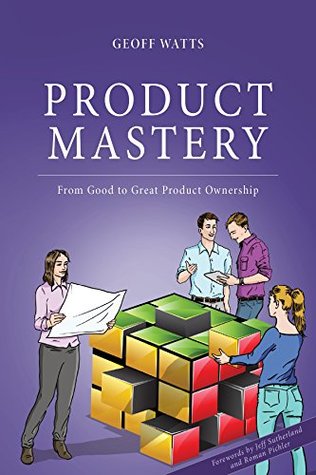More on this book
Kindle Notes & Highlights
by
Geoff Watts
Read between
July 18 - July 22, 2022
Patterson, Grenny, McMillan & Switzler recommend that in difficult conversations, each person should STATE their story: Share your facts Tell your story Ask for others paths Talk tentatively Encourage testing
“the only limit to how strongly you can express your opinion is your willingness to encourage others to challenge it”
Good product owners define a cohesive vision for the product. Great product owners empirically evolve the product.
“We don’t see the world as it is, we see it as we are.” Anais Nin
“Leaders become great, not because of their power, but because of their ability to empower others.” John Maxwell
Good product owners lead from the front. Great product owners lead from within.
former American politician Henry Stimson: “The only way to make a man trustworthy is to trust him.” So trust we must.
by trusting someone you risk being proven wrong and taken advantage of but I think that’s better than the alternative: transactional relationships built on cynicism.
“Scrum even works with idiots. You can get a bunch of people who have never done software development, have never been to college—who hate each other—and put them in a room for 30 days with a prioritised product backlog; and Scrum would work fine. It will work fine because in 30 days you will know empirically what that team is capable of and then you can choose what to do with that information about the team.”
Good product owners write good stories. Great product owners tell great stories.
Many product owners find it useful to think of the negative personas or exclusionary personas. These are people who definitely are not the intended audience for the product.
People want to hear stories so that they can become part of them.
User stories were never intended to be a tool for capturing requirements so efficiently that they could be implemented without collaboration. On the contrary, they were intended to provoke conversation and facilitate collaborative problem solving.
A team from the town Balamory Grew tired of the old user story Though it seemed a bit strange They used poems for a change Which led them to rhythmical glory.
Good product owners represent many different parties. Great product owners know they can’t please everyone.
“There’s a quote by Alec Issigonis about how the camel is a horse designed by committee. What it means is that by trying to please everyone, you only end up with something that pleases no one,
ultimately her job is to create an excellent product—her job is not to please the most stakeholders.
Good Product Owners avoid bad mistakes. Great Product Owners make good mistakes quickly.
It’s one thing to understand that the product can’t be perfect; it’s another to know how to effectively negotiate what exactly to deliver. Great product owners know that they can’t afford to operate in an “all or nothing” mindset and instead harness the opportunities available to them in an empirical approach such as Scrum to focus on “continual excellence” rather than perfection.
The great product owners would rather “delight” a smaller audience than “barely satisfy” a larger group. As such, they tighten the product’s focus, which results in a smaller development effort and a cheaper—and quicker—product release.
The Pareto principle (also known as the 80:20 rule) states that roughly 80% of the value comes from 20% of the effort—it has been a guiding rule of thumb for many domains since 1896.
We called these projects technical successes because technically they were a success: we had delivered the pre-defined requirements on time and within budget. In reality, however, these projects were failures because they provided little to no value to our customers.
Good mistakes, therefore, are ones that: Are made in good faith, in the pursuit of doing the right thing for the product rather than the easy decision or the fear of making the wrong decision. Allow us to find out what works and what doesn’t work quickly and cheaply. Keep as many options open to us as possible for as long as possible. Reduce the risks in the project early.
Figure N-11: A story map allows you to visualise the product across multiple dimensions.
Good product owners know how to use agile tools and artefacts. Great product owners are DRIVEN to develop their subtle, softer skills.


